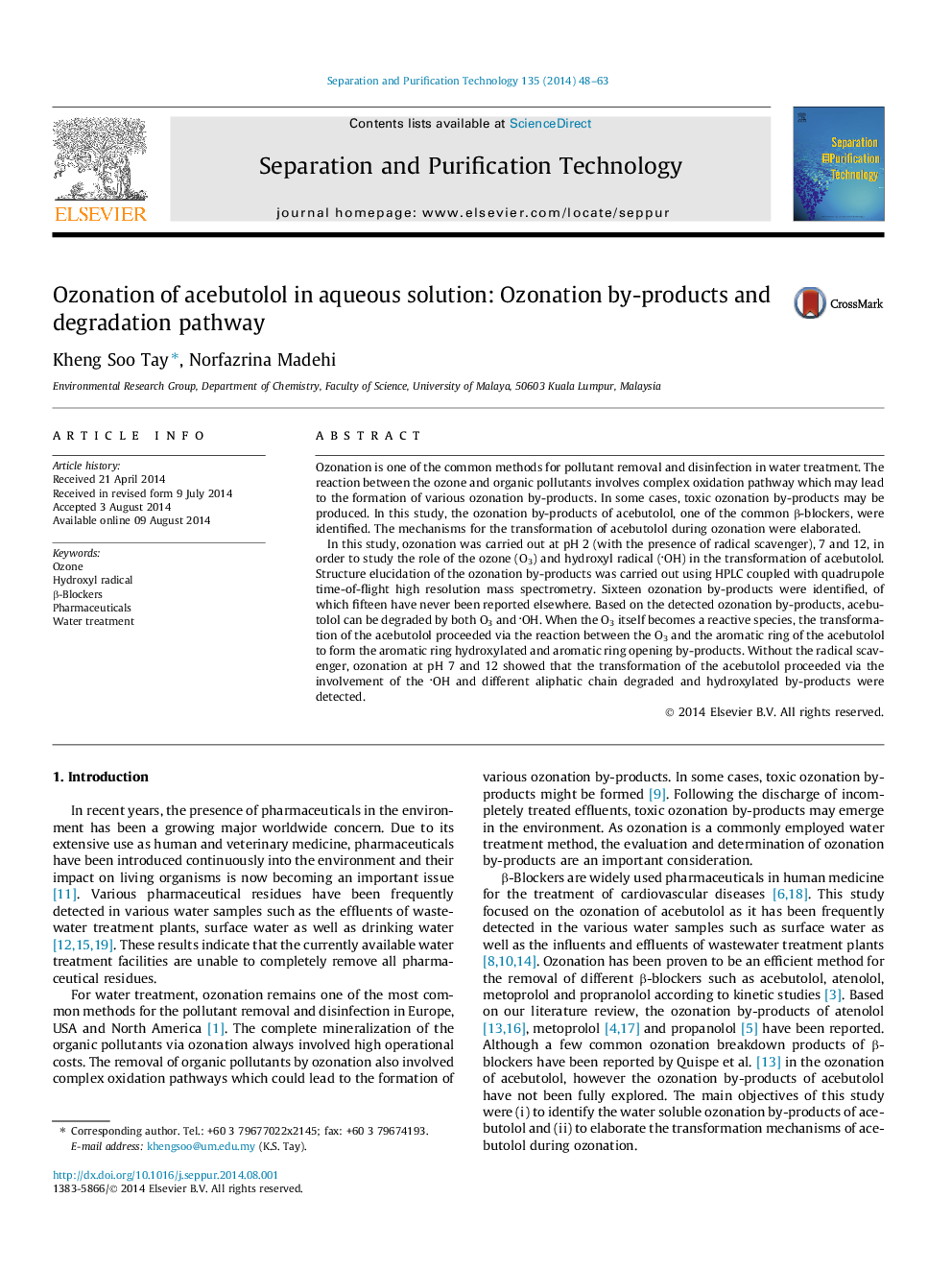| Article ID | Journal | Published Year | Pages | File Type |
|---|---|---|---|---|
| 641079 | Separation and Purification Technology | 2014 | 16 Pages |
Abstract
In this study, ozonation was carried out at pH 2 (with the presence of radical scavenger), 7 and 12, in order to study the role of the ozone (O3) and hydroxyl radical (OH) in the transformation of acebutolol. Structure elucidation of the ozonation by-products was carried out using HPLC coupled with quadrupole time-of-flight high resolution mass spectrometry. Sixteen ozonation by-products were identified, of which fifteen have never been reported elsewhere. Based on the detected ozonation by-products, acebutolol can be degraded by both O3 and OH. When the O3 itself becomes a reactive species, the transformation of the acebutolol proceeded via the reaction between the O3 and the aromatic ring of the acebutolol to form the aromatic ring hydroxylated and aromatic ring opening by-products. Without the radical scavenger, ozonation at pH 7 and 12 showed that the transformation of the acebutolol proceeded via the involvement of the OH and different aliphatic chain degraded and hydroxylated by-products were detected.
Related Topics
Physical Sciences and Engineering
Chemical Engineering
Filtration and Separation
Authors
Kheng Soo Tay, Norfazrina Madehi,
